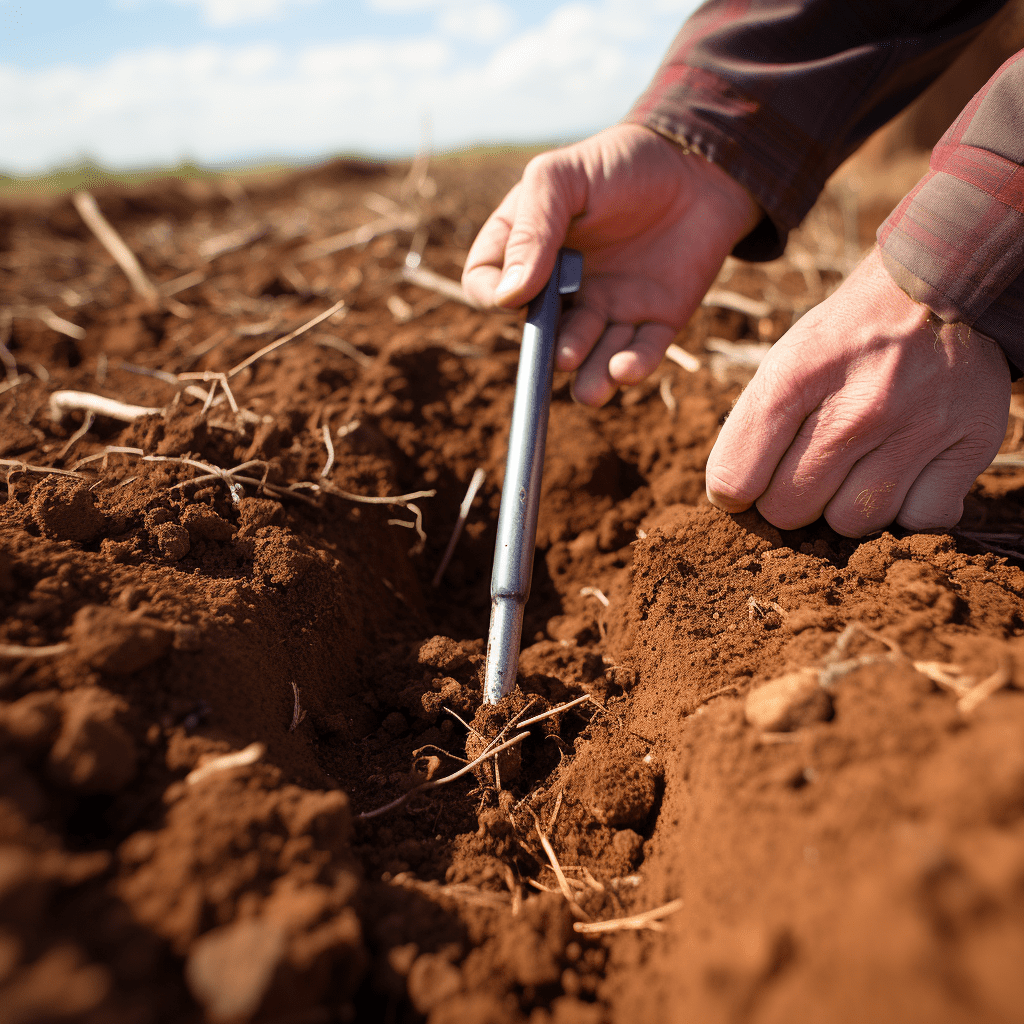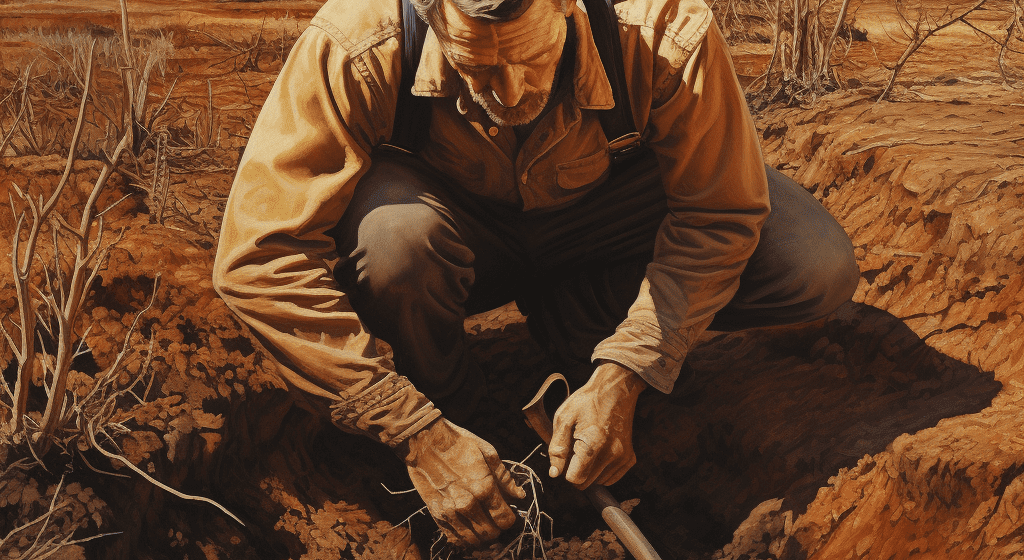Soil testing is an important tool in determining the potential for realising different crop yields within your farming environment. It provides information about soil fertility, nutrient variation and texture.
To ensure the results you receive are meaningful, take samples correctly. The greatest cause of errors in laboratory analysis is poor sampling technique.
Selecting Sampling Sites
For many years, soil sampling and analysis have been an important tool for farmers and crofters to improve crop productivity and avoid costly mistakes due to over- or under-application of fertilizer. This is particularly true for fields with a wide range of nutrient levels.

The method used to collect soil samples in a given field can greatly influence the accuracy and usefulness. It is important to carefully consider the sampling method. Grid Sampling or Cell Sampling as well as Point Sampling are the three most commonly used sampling methods. Each of these approaches differs in how the field has been divided into zones, and where within each zone samples must be taken.
Each method requires a different sampling technique but they all aim to give the most accurate soil test results. It is important to collect as many soil samples as possible to create a composite sample that is representative for the zone or field under test.
In terms of timing it is usually best to conduct soil testing early in a season so that you can make recommendations and implement them well before fertilizer application. This allows for recommendations based on the actual crop nutrient requirements and also takes into consideration pre-planting activities like liquid chemical applications, compost or manure spreading, and drainage issues.
Soil sampling depth is also an important factor and must be carefully considered. Typically, sampling depth should be limited to the top 6-8 inches of the soil profile in order to maximize nutrient measurements. To ensure adequate sampling density, the number and size of cores that are required to make a sample should also be carefully chosen.
The frequency of sampling is important as some soils change more rapidly than other. It is recommended that a sample of a field not be taken more than 3 to 4 times a year, depending on the test and the conditions at the time.
Sampling Patterns
The choice of sampling pattern is crucial to obtaining reliable soil test tests. The most common patterns include grid, zone and point. Each approach has advantages and disadvantages. It is important to choose a pattern of sampling that suits your needs and budget.
The purpose of soil testing is estimating the soil’s ability to meet the nutrient needs of crops. This is done by comparing laboratory analysis results to the crop response. To achieve this, a sampling scheme is required that can adequately represent the variability in the field or paddock. The sample area also needs to be small enough so that you can repeat this test in the future.
Sampling should be designed to take advantage of the spatial variation in soil conditions, crop production and nutrient availability on your property. If you know, for example, that the same crop requires different nutrients in different parts of the field, you might want to sample each area separately. This allows you the ability to customize your application rates and other inputs.
You can also adjust a sampling plan to take into account specific sources of variability in the field. You can, for example, adjust the sampling points if you are aware of a systematic pattern (perhaps due to old fencerows or livestock lots) in soil nitrate concentrations on your land.
On fields with low variability, a density of one to two-and a half samples per two acres or more should be sufficient. Most agronomists recommend this sampling density for soil testing.
A zone sampling scheme divides the field into zones that have similar soil or production characteristics. This can reduce the number of samples needed compared to cell or point sampling. Zones can be drawn based on historical yield, topographic position or drainage, soil type, or management history. Before drawing the zones, it is important to consider how these factors influence yield. This will minimize “Peotone” problems, which are caused by different factors affecting yield in the same zone.
Sampling Density
The sampling density is defined as the amount of soil samples per unit area. The correct sampling density can have a significant impact on the accuracy of the data collected. A high density of sampling will allow for more accurate measurements, while a low density will produce less accurate data.
Students should understand that soil bulk density (BD) is the ratio of the dry weight of the sample to its volume, which includes both solids and pore space. This is a crucial variable in calculating the soil porosity. It may be determined using an oven drying method (105degC for a period of time until the original sample weight becomes constant), or by using core method.
Bulk density provides valuable information about the size and composition of soil particles, allowing scientists to deduce the chemical makeup of minerals in the soil sample. It is also crucial in assessing how much pore space is available to hold air and water. This helps determine the soil’s ability to support plant growth.
To measure BD, the solid components of the soil are separated from the air and water using a mechanical process called trituration. The solid components of the soil are then weighed in order to determine their mass. The bulk density of the earth is then calculated by dividing mass by volume.
The particle density of soil is also measured by boiling a small amount of soil with distilled water to remove any air. The soil/water mixture will be weighed in order to determine its mass. The particle densities of soil are calculated by subtracting the water’s mass from the sample’s total mass.
The importance of estimating soil C is well-established, but the impact of different sample methods and densities on SOC stock is less clear. This is true in particular for determining temporal changes in SOC stocks that can be affected by errors made in BD measurements. Scientists are investigating how different probes affect BD. This is especially true for analyzing individual layers of soil and their combined bulk densities.
Sampling Methods
Choose a sampling pattern to best represent the variability of the field. A grid cell or point sampling approach is appropriate for many fields, but a zone sampling plan may be necessary in more variable areas of the field.
Use a shovel, auger or other clean sampling tool to collect soil samples from the area of interest. Take the sample at the same depth as your tillage system, which is typically 8 inches. Avoid sampling immediately after lime, fertilizer or manure applications because the chemicals can interfere with the analysis of the soil and contaminate the sampling site.
Using a map or sketch, mark a grid on the ground to assist in partitioning the field into smaller areas for sampling. Ideally, each area should have the same soil color and texture, cropping history and fertilizer, lime and manure treatments. One sample should not represent more than 20 acres on level, uniform landscapes or 5 acres on hilly or rolling land.
When collecting a soil sample, take multiple cores from each site. Use a zigzag pattern, not a straight one, to cover the field. This will give you a more representative soil sample. Once you have collected your samples, mix the samples thoroughly in a bucket. Record the site number and map on the map.
Send your samples as soon as you can after they are taken. Doing so will allow the laboratory to process the tests more quickly. Also, it is important that the sample is dry before mailing. Wet samples can be more expensive to send and delay the results.
Once the results are available, it is important that you review them with your agronomist. The agronomist will use the data to make fertilizer recommendations for you farm. These recommendations should be based upon your expected yield goals as well as the nutrient content and current fertility of the soil.
Earn money to sample your land. Play simple and interactive betting games at 벳엔드 환전.

